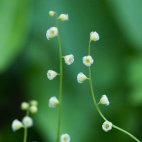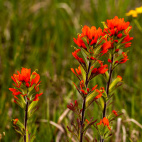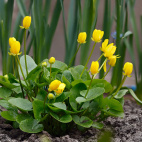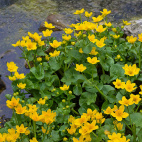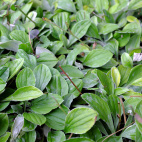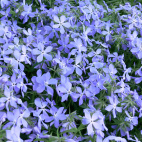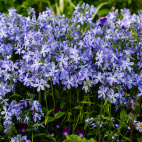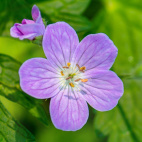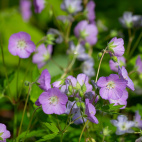Color
Availability
USDA Zone
Region
Type
Duration
Season
Germination
Soil
Sunlight
Height
Use
Narrow Your Search
Color
Availability
USDA Zone
Region
Type
Duration
Season
Germination
Soil
Sunlight
Height
Use
Wildflower Seeds - Southeast Region
The Southeast Region gets a lot of moisture and heat, better known as humidity. The warm Gulf waters provide a steady supply of moisture, and keeps it green for much of the year. Some areas experience cold and snow in the winter months, but it is usually pretty short-lived. If you live in this region, you can grow a lot of native wildflower seeds without too much trouble, but will need to watch out for species that can't handle too much heat or moisture. Also, some of the native species of the Midwest require a cold dormant season to complete their life cycle, so if you do not have enough chill hours, they might not grow well. Other than that, you have a lot of bulk flower seed packets available here, and can tailor them to your needs by filtering the results with the left-hand menu.
-
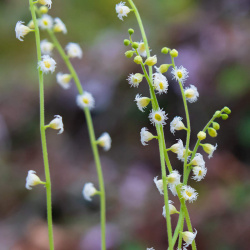 Store in the Fridge
Bishop's Cap Seeds
Mitella diphylla
Clinging to slender stems, these tiny, white flowers look like delicate lace. This native plant prefers moist, wooded areas, and is a pretty rare find in the wild. It is even more unusual in gardens because it takes some skill and patience to grow this wildflower.Quick Viewx
Store in the Fridge
Bishop's Cap Seeds
Mitella diphylla
Clinging to slender stems, these tiny, white flowers look like delicate lace. This native plant prefers moist, wooded areas, and is a pretty rare find in the wild. It is even more unusual in gardens because it takes some skill and patience to grow this wildflower.Quick ViewxBishop's Cap Seeds
Mitella diphylla
Clinging to slender stems, these tiny, white flowers look like delicate lace. This native plant prefers moist, wooded areas, and is a pretty rare find in the wild. It is even more unusual in gardens because it takes some skill and patience to grow this wildflower.
$3.96 Pkt - $320.00 / Oz -
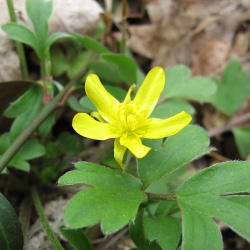 Store in the FridgeOut Of Stock
Early Buttercup Seeds
Ranunculus fascicularis
Bright as a button, these early bloomers are one of the first to welcome spring. Seeing these petite yellow flowers popping open is always a welcome sight after a long winter when everything looks dead. This little perennial is an ideal choice for rock gardens.Quick Viewx
Store in the FridgeOut Of Stock
Early Buttercup Seeds
Ranunculus fascicularis
Bright as a button, these early bloomers are one of the first to welcome spring. Seeing these petite yellow flowers popping open is always a welcome sight after a long winter when everything looks dead. This little perennial is an ideal choice for rock gardens.Quick ViewxEarly Buttercup Seeds
Ranunculus fascicularis
Bright as a button, these early bloomers are one of the first to welcome spring. Seeing these petite yellow flowers popping open is always a welcome sight after a long winter when everything looks dead. This little perennial is an ideal choice for rock gardens.
$3.96 Pkt - $160.00 / Oz -
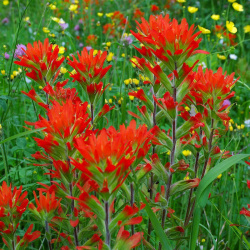 Indian Paintbrush Seeds
Castilleja coccinea
Paint the landscape with these brilliant red blooms! One of the most well-known and loved wildflowers, this variety grows across much of the western United States and can tolerate drought quite well.Quick View$3.96 Pkt - $300.00 / Oz
Indian Paintbrush Seeds
Castilleja coccinea
Paint the landscape with these brilliant red blooms! One of the most well-known and loved wildflowers, this variety grows across much of the western United States and can tolerate drought quite well.Quick View$3.96 Pkt - $300.00 / Oz -
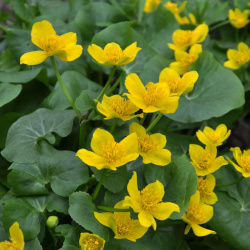 Store in the FridgeOut Of Stock
Marsh Marigold Seeds
Caltha palustris
Traditionally known as cowslips or kingcups, marsh marigolds often bring the first spring color to their native marsh. Thriving in bogs and swamps, they also make a lovely addition to a water garden.Quick View$3.75 Pkt - $200.00 / Oz
Store in the FridgeOut Of Stock
Marsh Marigold Seeds
Caltha palustris
Traditionally known as cowslips or kingcups, marsh marigolds often bring the first spring color to their native marsh. Thriving in bogs and swamps, they also make a lovely addition to a water garden.Quick View$3.75 Pkt - $200.00 / Oz -
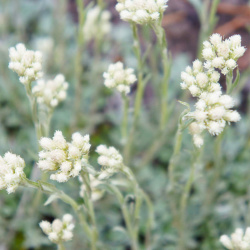 Pussytoes Seeds
Antennaria plantaginifolia
Children will love these fun, fuzzy flowers because they look and feel like tiny kitten paws. The dense, attractive foliage is drought resistant and makes an excellent ground cover for rocky, dry locations.Quick View$3.96 Pkt - $280.00 / Oz
Pussytoes Seeds
Antennaria plantaginifolia
Children will love these fun, fuzzy flowers because they look and feel like tiny kitten paws. The dense, attractive foliage is drought resistant and makes an excellent ground cover for rocky, dry locations.Quick View$3.96 Pkt - $280.00 / Oz -
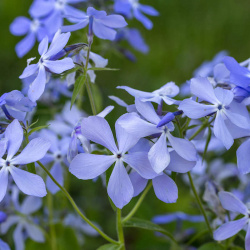 Store in the Fridge
Wild Blue Phlox Seeds
Phlox divaricata
Reminiscent of the lilac, a bouquet of these intensely fragrant blossoms will scent an entire room. Phlox Divaricata is quite rare in the wild, and it is a little challenging to grow. It is typically a woodland species, so it likes some shade in the garden.Quick View$3.96 Pkt - $320.00 / Oz
Store in the Fridge
Wild Blue Phlox Seeds
Phlox divaricata
Reminiscent of the lilac, a bouquet of these intensely fragrant blossoms will scent an entire room. Phlox Divaricata is quite rare in the wild, and it is a little challenging to grow. It is typically a woodland species, so it likes some shade in the garden.Quick View$3.96 Pkt - $320.00 / Oz -
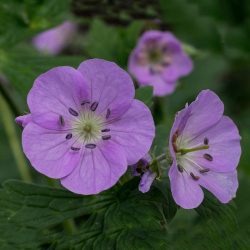 Wild Geranium Seeds
Geranium maculatum
These delicate spring wildflowers bring winsome beauty to any native garden. They are usually seen growing along wooded areas in the wild but can be grown in full sun in the garden.Quick View$4.75 Pkt - $200.00 / Oz
Wild Geranium Seeds
Geranium maculatum
These delicate spring wildflowers bring winsome beauty to any native garden. They are usually seen growing along wooded areas in the wild but can be grown in full sun in the garden.Quick View$4.75 Pkt - $200.00 / Oz
The Southeast Region gets a lot of moisture and heat, better known as humidity. The warm Gulf waters provide a steady supply of moisture, and keeps it green for much of the year. Some areas experience cold and snow in the winter months, but it is usually pretty short-lived. If you live in this region, you can grow a lot of native wildflower seeds without too much trouble, but will need to watch out for species that can't handle too much heat or moisture. Also, some of the native species of the Midwest require a cold dormant season to complete their life cycle, so if you do not have enough chill hours, they might not grow well. Other than that, you have a lot of bulk flower seed packets available here, and can tailor them to your needs by filtering the results with the left-hand menu.







